| Numinous The Music of Joseph C. Phillips Jr. |
The Numinosum Blog
 Completing my Mostly Mozart Festival John Adams double play on Monday night was an all-Adams chamber music program at Alice Tully Hall's Starr Theater. The International Contemporary Ensemble (ICE) performed Shaker Loops (the septet version), Gnarly Buttons with guest clarinetist Michael Collins, and Son of Chamber Symphony all conducted by John Adams. Unlike Sunday's performance of the John Adams opera, A Flowering Tree, the crowd at the ICE concert was slightly younger, definitely hipper (or maybe more stylish is a better description) and only marginally more diverse. And again unlike Sunday, there were a sprinkling of empty seats throughout the hall, although for all intents and purposes, it was quite full. Shaker Loops, one of Adams' early works (and probably the one to jump start his fame) bounded open at a brisk pace, with both Adams and the strings, energetically shaking and looping throughout. Watching Adams bouncing along with the music, mimicking the forceful unison rhythmic passages, and giving spirited emotional directives with his conducting, made me wonder how much fun he must be having directing his music. Especially with this piece which has much youthful extroverted brio and elan, although echos of Adams to come are also present: energetic minimalistic cells; bubbling harmonic and rhythmic tension contrasted with a lovely slower and more static section; a general sense of optimism and hope. Gnarly Buttons was next up and while I have heard this piece a few times on CD, listening on Monday night brought me a new found insight and admiration. The first movement, "The Perilous Shore", started with a plaintive solo clarinet melody moving into something that resembled a distilled Irish reel or jig. With the jagged lines and counterpoint and the sound color of the ensemble, "The Perilous Stone", and Gnarly Buttons in general, did bear some resemblance to Stravinsky's L'Historie-Octet-Les Noces period of the 1920's. The second movement, "Hoedown (Mad Cow)", was a sort of refracted cakewalk with jaunty syncopation and lively spirit as well as a few humorous moments (including a 'cow moo' sample from one of the keyboards). The ending of the movement was luminous with Michael Collins singing clarinet melody over calm balalaika-like mandolin strumming. The third movement, "Put Your Loving Arms Around Me", reminded me, especially with the open pulsation and flute melody and guitar figures, much of Naive and Sentimental Music and later of Harmonielehre with its harmonic changes and overall blending of more 'romantic' and minimalism gestures. The movement's end with an elegiac and prayer like tone, with the clarinet hovering on top of stillness, was beautifully rendered by Michael Collins and ICE. After intermission and before the start of the second half, John Adams came out and spoke to the crowd. With a wry sense of humor, he informed us about the 'oedipal' problems of the printed program which had listed the titles of the upcoming Son of Chamber Symphony with the names of the progenitor Chamber Symphony. Then, giving the downbeat he and ICE were off into the first groove of the opening movement, with melodic lines flying around the stage like Olympic gymnasts. The second movement featured beautiful long-lined Adams' hyper-melodies' while the final movement had the energy of Shaker Loops but the texture and interlocking rhythms of Chamber Symphony. Overall, I found the Son a worthy off-spring of the Father. I overheard a number of people around me during the four! standing ovations say that that was their favorite piece of the night. POSTED BY NUMINOUS AT 11:35 PM
0 Comments
Last night I went to a performance of the latest opera of John Adams, A Flowering Tree. Based on a 2000 year old South Indian folk tale, this performance was a part of Lincoln Center's Mostly Mozart Festival and featured singers Sanford Sylvan, Jessica Rivera, and Russell Thomas, the Orchestra of St. Luke's, a trio of Javanese dancers, and the ScholaCantorum de Venezuela directed by Maria Guinand. And you may ask, what does composer John Adams, Javanese dancers, a ancient Indian folk tale, and a choir from Venezuela and often singing in Spanish, have to do with Mozart? Well, after earlier this year reading John Adams' autobiography Hallelujah Junction (and also retold by director Peter Sellars in a post-performance discussion) the story was that Peter Sellars was asked in 2006 to direct the New Crowned Hope Festival in Vienna to celebrate the 250th anniversary of Mozart's birth. And when Peter asked John if he could write something for the Festival, John replied, "I want to do Magic Flute!". And with that, the seed that was later to become A Flowering Tree was planted.
John Adams wrote in the program of last night's performance: Mozart was my first composer. His clarinet concerto was the first serious work I mastered as a performer. The three late symphonies, his string quintets, and almost all of his piano concertos were, and continue to be, canonical items for my musical imagination. When I first began to struggle with tonal harmony my teacher gave me a full score of Don Giovanni and told me to memorize not only the arias and ensembles but even the recitatives. A biography of Mozart provided the launch pad for my life as a composer. Decades later Die Zauberflöte (The Magic Flute), his Enlightenment statement about youth, initiation, and the dawning of moral awareness, provided the model for my own opera A Flowering Tree. In the opening, a storyteller (Sanford Sylvan) introduces a Prince (Russell Thomas) and Kumudha (Jessica Rivera), a poor young women who "magically morphs into a tree, undergoing myriad transformations, to help her poor family." Also on stage for most of the opera were the three Javanese dancers (Rusini Sidi, Eko Supriyanto, and Astri Kusuma Wardani) who were non-singing avatars of Kumudha, the mother/sister, and later the Prince. This parallel action, while far from being a jejune distraction was actually quite effective and moving: the dancers, as the singers were singing, could actually show the interior emotions of the characters in ways words couldn't. The entire first act was devoted to Kumudha and how through the act of transformation, the sale of flowers gathered from her tree form helped her family. The Prince, who was an aimless sort, one day by chance spiedKumudha transforming and goes to his father and says of Kumudha, "She troubles me, she troubles me". And the father brings her to the palace to become the Prince's wife. However the Prince really wants her to transform into the tree ("your gift belongs to me") and after she agrees to show him, she returns back to human form and they make love for the first time among the fragrant petals of Kumudha. Of course this being opera, there has to be conflict! The second Act while starting off with the happy couple in the palace slowly mutates to a scene with the jealous and envious sister of the Prince, 'tricking' Kumudha while the Prince is away, into performing her gift. And while in mid-change during the transformation ritual, the sister and a group of friends break branches and tear off flowers from Kumudha's treeself, leaving her unable to return to a wholly human form. Now somewhere between human and tree, this grotesque stump crawls away ("like a worm"), ashamed and dishonored. The Prince upon his return searches for his wife to no avail. So he forsakes all his princely riches and wanders the country as an ascetic. At the end they find each other and when he realizes that stump is his wife, he performs the magic ritual to return her to beauty and human form once again. How to describe such a magical performance and work? First, rarely do I sit so close (I was in the first row, about 10 feet directly behind John Adams as he was conducting-the orchestra was on-stage with the singers, choir, and dancers). It brought another level of excitement to see and feel the reactions of all the performers so intimately. There were many gorgeous and wonderful moments in the opera: the incredibly fluid dancing by the Javanese dancers (imagine a blend of graceful Tai Chi and Bollywood-esquemovement); the choir's first entrance (accompanied by lovely orchestration and harmonic motion) which was so quietly angelic and ethereal one would have thought the heavens were opening up and welcoming you; the wonderful "Flowers, Flowers, Lovely Flowers!" also sung by the choir during Kumudha's first transformation in the first Act (brought to mind the echos of ecstasy found in "Wild Nights" from Adams's Harmonium); the end of the first Act when the Kumudha performs the Flowering Tree transformation for her new husband and they embrace as if meeting for the last time; the singing of the Prince throughout, whose forceful and ringing voice was often stirring and moving; a virtuosic violin interlude in Act 1; the gorgeously intertwined duet in the second Act between the lovers; the "Monkey Chant" of the second Act; the glowing harmonic and rhythmic build-up of tension and awakening, mirrored in the lighting which changed from darkness to a beautific golden orange, all climaxing in a glorious unison pitch as the Prince completes transformation of the stump back into a human during the final moments of the opera. As an aside one of the first things I noticed just as the opera started was the choir. Seated around the perimeter of the opera set, they were all dressed in colorful saris and kurtas (even John Adams had a colorful green vest). And when they came onto the set, one was struck by how attractive and beautifully diverse they were. All sizes, hues and colors and all very dynamic and engaging when they sang. Particularly there was one female singer in a blue sari (see below photo), whose attentiveness to watching John Adams conducting was as a lover to her partner, and while all of the choir to varying degrees were emotive, this one young women was quite mesmerizing (actually talking with my friend afterwards, I found he was thinking the same thing throughout the opera!). Truly they were the "Greek choir" that not only commented on the action, they were a part of it (for example, they were the friends beckoning Kumudha to transform). And whenever they sang or were on stage, these were some of my favorites parts of the opera, both theatrically (for example, the opening hand gestures of an upturned cupped hand 'popping' open to the sky like a flower bud was evocative) and musically (some of the most inventive and beguiling music was during the choruses). During the opera it was interesting to hear how echos of past John Adams (from Harmonium to El Nino) as well as influences from Steve Reich to more ethnic musics, all were woven together in a subtle language that was decidedly John Adams. And the post-performance discussion with Peter Sellars and Maria Guinard was informative; hearing Peter Sellars speak about art and creativity and democracy was very inspiring. I really wished I could have seen A Flowering Tree again immediately after because there was so much richness and life and beauty there, it was difficult to take all in on one viewing. I must say it all was very inspiring to me to see such creativity and imagination which wasn't afraid to touch on both the sorrows and joys of life. It was a 'thinking space' or "a repose in a world often filled with horrors and terrors" that offered its own poignant, challenging, and unflinching mediation into the redemptive and restorative power of love. POSTED BY NUMINOUS AT 10:00 AM 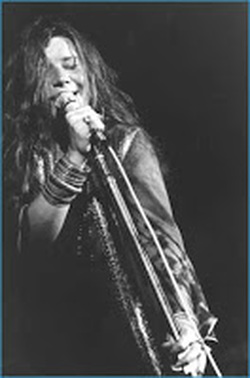 40 years ago yesterday was the start of the Woodstock Festival and reading and thinking about it sparked other thoughts about another icon of the 60s, the Beatles and the hoopla surrounding the upcoming release of remastered Beatles albums in September. And I realized something, which I've felt for sometime now, but only manifested into concrete form during my contemplations: I'm not a fan of the Beatles or of Woodstock. Now before I hear classic cries of heresy that usually accompany displeasure of something canonical ("how can you not like the Beatles?", "are you crazy?", "you have no taste in music", etc.), my lack of enthusiasm for the Beatles and Woodstock is not for lack of understanding (I guess some WOULD say I lack understanding if I don't like them). I have seen the Woodstock DVD and listened to many Beatles songs over the years (both originals and arrangements--I have the Basie on Beetles vinyl somewhere and a Wes Montgomery rendition of "A Day in the Life"). I have read about both and yes, I get that the Beatles revolutionized recording techniques and influenced all popular songcraft (and celebrity) and yes I get Woodstock marked a sort of milestone of cultural and musical convergence of (some of) the 196o's themes: hippies, war, peace, love, rock and roll. It's just that they don't move me. Well, at least not in the same way that they seem to move all the arbiters of cultural relevance. Don't get me wrong, I do respect the Beatles and even like some songs (especially from Sgt. Pepper's; also this past winter on the radio I listened intently to The Beatles White Album Listening Party and was fascinated by some of what I heard and certainly plan to add that album to my collection when the remaster comes out). And with Woodstock, while really enjoying Janis Joplin, Jimi Hendrix, Sly and the Family Stone, Joe Cocker among other performances on the concert film, when I start to hear people talk about their recollections of being at Woodstock as some incredible moment!, my eyes start to glaze over like when people say, "ah, back in the day, New York in the _____'s, that was the real New York" or "you should'a been at Ebbets Field". I feel like that women in the Wrigley's commercial who while looking for another piece of gum misses "the moment". Sure, hearing about "back in the day" can be interesting and fascinating, but it can also sometimes strike me as a bit distant and off-putting. I did this, lived through this, heard this...and you didn't. In some ways it doesn't value the present, always looking back to a (real or imagined) "better time" which I guess we are all guilty of at times. So still knowing all that I do about Woodstock and the Beatles, hearing and seeing what I've seen and heard, I always come back to, what's the big deal? It's like that line about Elvis in Public Enemy's "Fight the Power" (comes 2:38 in video), and I paraphrase (and cleaning it up) here: a hero to most, don't mean anything to me. Writer John Murph on The Root has an interesting article looking at Woodstock from a different perspective but for me as a rational, intellectual person (regardless of personal background), shouldn't the adoration of the Beatles and Woodstock be up there like other (supposed) high cultural totems: French cinema from the 60's, Ginsburg, Seinfeld, Ellison, Radiohead, Duke Ellington? We've all met or dated people where you do like each other but you're missing that thing, that spark, that "YES YES YES YES YES YES" moment in your brain, of real emotional (or physical) connection with another. For me, I think the Beatles and Woodstock will always be that respected acquaintance I'll see at a distance or run across every so often, but whom, for me, there is no there there. Not that there's anything wrong with that... On an entirely different subject, Friday was Magic Johnson's 50th birthday and as Roy S. Johnson writes on his Yahoo Sports Blog, "I never thought I'd see this celebration". Magic was one of my favorites players growing up. I remember seeing the Michigan State (Magic)-Indiana State (Larry Bird) dual, Magic's rookie season NBA Final's heroics ("back in the day"--see even I can't get away from it!--the broadcast from the West Coast came on at 10 or 11pm Eastern Standard Time-can't imagine THAT happening now), playoff battles with the Boston Celtics, Detroit Pistons, and later the Chicago Bulls, and of course, his announcement of HIV and early retirement. As Roy Johnson points out, with all of his post-NBA business dealings, Magic is one of the few athletes to make more money in retirement than during his playing days. POSTED BY NUMINOUS AT 6:58 AM 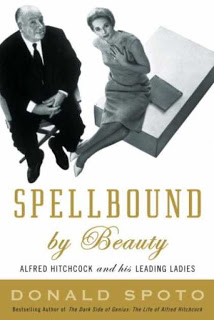 Along with being busy converting and editing Pulse and Numinous videos, last weekend I finished Donald Spoto's Spellbound by Beauty: Alfred Hitchcock and his Leading Ladies. I originally checked this book out from the library to take with me on my Paris trip early last week; I wanted something light and fun for the plane ride. However the Hitchcock quote on the front cover was an indication that this book wasn't going to be what I thought: "The trouble today is that we don't torture women enough." Ah, okay. Now once I began reading the book, I found the context for the quote-Hitchcock was describing the traditional way, since the early days of film, of creating excitement on-screen: the "lady in distress" which Hitch felt (at that time) was lost. However, I'm thinking Hitchcock actually DID believe in his quote what with the treatment endured by many of his leading women, usually from Hitchcock himself, which was often rude and controlling, sometimes misogynistic, and with a few women, downright sexual harassment. Now growing up, I knew OF Hitchcock. He was an icon--the rotund, jowled avuncular figure who made those old horror movies, Psycho and The Birds. Of course I never actually SAW Psycho or The Birds growing up. But I didn't really need to; shower scene (check!), Bates Motel (yep, check!), crazy birds attacking (you betcha!)--I knew it all without ever seeing it because it was all just part of the stream of American culture. I was young when Hitchcock died in 1980 and his death never really marked anything for me. He was apart of that long ago world which also included people such as Cary Grant, Ingrid Bergman, Jimmy Stewart, Katherine Hepburn, Joe "Mr. Coffee" DiMaggio, Princess Grace, and Betty Davis; all of whom were alive when I was younger and while I was cognizant then that they were somebody back in the day (especially Joltin' Joe, since I was hugely into baseball), I knew little to nothing about them at the time, well except for occasional glimpses in the National Enquirer or featured on Johnny Carson's Tonight Show. It wasn't until about six years ago that I began to be interested in Hitchcock and his body of films. I don't really know how it started except that I check out one or two of his movies from the library and was hooked. The 39 Steps, Notorious, Spellbound, Vertigo, The Man Who Knew Too Much (both versions), North by Northwest, Shadow of a Doubt, Rear Window (seeing Grace Kelly in that movie inspired me to write a piece about her, "Passion of a Quiet Flower"), Frenzy and yes, finally Psycho and The Birds, I saw all that the library had (seems like I had more time to watch movies back then). I was struck how Hitchcock was able to balance artistic demands, technical virtuosity, humor, and serious psychological and human nature study all wrapped up in a bon-bon that feted a wide and diverse audience, one that Joe Six-Pack and Mademoiselle Cinema-ista could both enjoy. Indeed, Hitchcock was the public's auteur. Even his last movie, Family Plot from 1976, when he was going through the motions and young, hip directors such as Martin Scorsese, Peter Bogdanovich, and Steven Spielberg seemly past him by, there were still wonderful moments that demonstrated he still had the touch: such as the (literal) killing scene on the staircase where the woman's long purple dress gracefully flows full, all shot from a perspective high above the scene. And of course the music, especially the Bernard Herrmann scores to Psycho and Vertigo, was fantastic. Listening recently I'm still impressed and moved by the end of the shower scene of Psycho and how those strings sound like last gasps of air or the opening montage in Vertigo with the wonderful Eb minor-major 7th, contrasting motion arpeggios with the Saul Bass swirling graphics and later in the film with the growing tension and climax of the Madeleine 'revealing'. Spellbound by Beauty is a chronological overview of Hitchcock's movies, with a focus on his relationship to not only his leading ladies but also the supporting actresses as well. Through interviews with many actors and actresses, writers, and other collaborators who worked with Hitch over his long career, most agreed that he could be charming and witty and certainly a genius but who was also frustrated sexually which manifested itself through crude sexual and bathroom humor, a controlling manner, and an often standoff-ishness with women not his ideal (of course his ideal was blond: Madeleine Carroll, Ingrid Bergman, Grace Kelly, Vera Miles, Tippi Hedren). There was one quite sad quote from Hitchcock himself which said he had the same feelings as everyone else, just "wrapped in a body of fat". The book is mostly gossipy, but there are many interesting tales and facts to be found: what wonderful and warm people Ingrid Bergman and Madeleine Carroll were, what a control freak producer David "Gone with the Wind" O. Selznick was, how Tallulah Bankhead was the Lindsay Lohan of her day, and astonished in how the treatment of Tippi Hedren during The Birds and Marnie was criminal and who NEVER happen or be allowed today--the final scene in The Birds basically involved the crew throwing live birds at Tippi Hedren for a week of filming; the isolation, controlling, stalking and sexual harassment on and off set of Marnie. Also there is some interesting analysis of how some of his films, particularly Vertigo and Marnie, could be autobiographical but overall I wasn't very happy with the writing of the book. I guess a question that could be asked is whether all of the salacious details of Hitchcock, change my high opinion of his films? Will Grace Kelly be diminished in my eyes? I hope not (I can still listen to Wagner even though he was a reprehensible person), but even I'm curious to find out if it will the next time I watch Rear Window (I guess either way, I'll always have the first time of the "Kiss")... POSTED BY NUMINOUS AT 7:00 AM 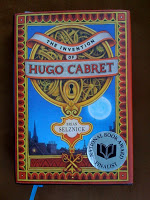 It was a happy coincidence that just before my short trip to Paris earlier this week I finished The Invention of Hugo Cabret by Brian Selznick, which is set in The City of Lights of the 1930s. The book won the 2008 Caldecott Medal for Best Illustrated Children's Book although in truth it is more of a hybrid: thicker and more prosaic (in the literal sense) than most picture books yet too many drawings to be a novel or storybook. The story begins with a brief introductory overview by "Professor H. Alcofrisbas", our narrator of sorts and leads directly into a wonderful black and white pencil drawing of the moon, then the moon over Paris, and eventually we find ourselves looking in a bustling train station and a close up of our namesake, a young pre-adolescent boy hustling through said station. The book proceeds to gradually unfurl the story of Hugo and how a broken mechanical man he found in a fire changes the rest of his life. At first, I was thinking the story was going to go in a fantastical, "Pinocchio" direction, but it evolves into a more realistic reverie on finding our way back into the world (and making connections with others) after a loss. In general the drawings in the book are cinematic in composition and concept with many interesting point of view perspectives, close-ups, and some consecutive drawings which in film would be dolly shots. Now this is apt since film and cinema play a central role in the story. Overall I found the book pleasant with Hugo, the toy shop owner, Georges and his daughter Isabelle forming the compelling central axis of the story. However, some of the most interesting parts of the book for me were the pages of actual photos, stills, and drawings from cinema of the 1920s. These were fun to see and reminded me of a DVD set of preserved films I bought almost 10 years ago, Treasures from American Film Archives. The early films, newsreels, documentaries, and one-reel adventures from that DVD set brought about a similar sense of voyeurism of a time and life long since past that I found in those actual photos from Hugo Cabret. Right now one of the books I'm reading is Spellbound by Beauty, Alfred Hitchcock and his Leading Ladies by Donald Spoto (the other is The Brief Wondrous Life of Oscar Wao by Junot Diaz) and so far the stories about the early days of Hitchcock's career are another fascinating window into that world of early cinema which Hugo Cabret peeks into. POSTED BY NUMINOUS AT 12:01 PM |
The NuminosumTo all things that create a sense of wonder and beauty that inspires and enlightens. Categories
All
|
Thanks and credit to all the original photos on this website to: David Andrako, Concrete Temple Theatre, Marcy Begian, Mark Elzey, Ed Lefkowicz, Donald Martinez, Kimberly McCollum, Geoff Ogle, Joseph C. Phillips Jr., Daniel Wolf-courtesy of Roulette, Andrew Robertson, Viscena Photography, Jennifer Kang, Carolyn Wolf, Mark Elzey, Karen Wise, Numinosito. The Numinous Changing Same album design artwork by DM Stith. The Numinous The Grey Land album design and artwork by Brock Lefferts. Contact for photo credit and information on specific images.
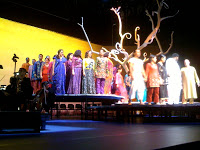
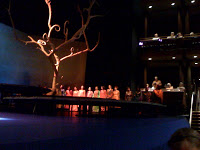
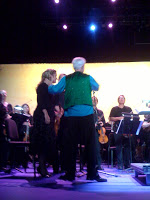
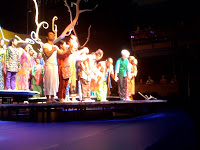
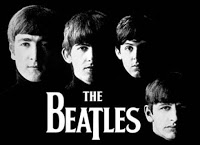
 RSS Feed
RSS Feed